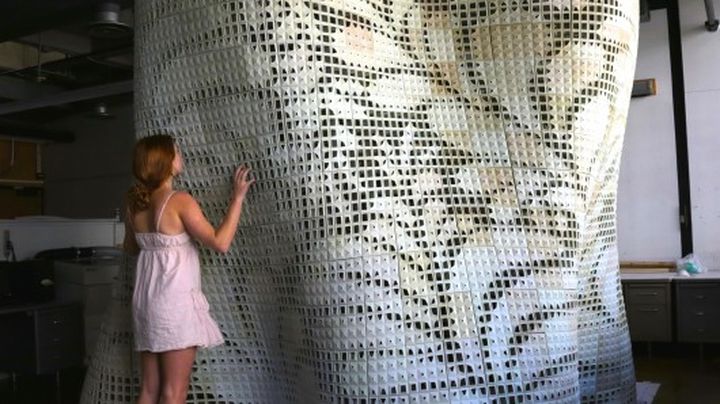3D-press seems not quite so surprising trend in the construction industry nowadays. It becomes a very important part in modern architecture, but it is difficult to assume and, what the extent of this “expansion” can achieve. It seems that the construction of the “fast” boxes low-rise buildings in Asia is unlikely to be limited to the case. A potential step forward was made a team of researchers UCA Berkeley headed by Associate Professor of Architectural Planning Ronald Reelem, who recently created a stand-alone pavilion called “Flower» (Bloom), to demonstrate the accuracy of the new cement powder based on the method of 3D-printed building.
A potential step forward was made a team of researchers UCA Berkeley headed by Associate Professor of Architectural Planning Ronald Reelem, who recently created a stand-alone pavilion called “Flower” (Bloom), to demonstrate the accuracy of the new cement powder based on the method of 3D-printed building.
A potential step forward was made a team of researchers UCA Berkeley headed by Associate Professor of Architectural Planning Ronald Reelem, who recently created a stand-alone pavilion called “Flower» (Bloom), to demonstrate the accuracy of the new cement powder based on the method of 3D-printed building.
We previously we reported on several 3D-printing architecture projects, including Castle Andrew Rudenko and impressive project Winsun, consisting of 10 buildings built in less than 24 hours.

However, the method that offered specialists Berkeley team is different from them, and instead displace wet cement, their technique involves printing out of thin layers of special dry cement powder, each then sprayed with water to result could be obtained fortified structure.
“Nowadays, there are some people who are experimenting with printing 3D-architecture, but only some of them are looking at 3D printing based on cement and related materials, with noteworthy. Even those who do prefer to displace the wet cement through a nozzle to produce a coarse structure, “says Reel, who is also a member of the authors’ conceptual project Cool Bricks.
Even those who do prefer to displace the wet cement through a nozzle to produce a coarse structure, “says Reel, who is also a member of the authors’ conceptual project Cool Bricks.
Source: Gizmag
Read another very interesting article about alternative energy of the Sun, water and air.





